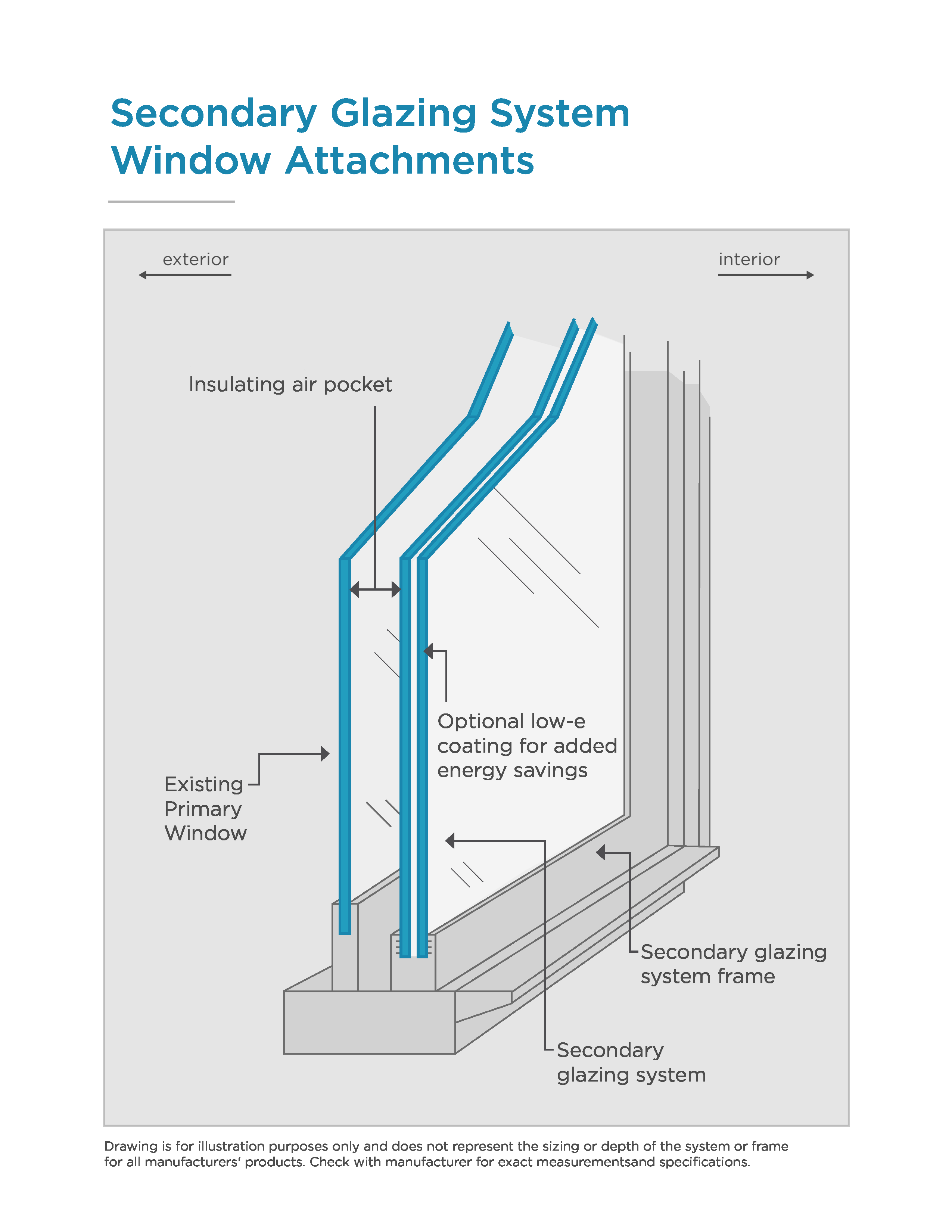By Christopher Meek, AIA, IES
Secondary glazing systems (SGS) offer buildings owners the opportunity to improve existing window performance, increase tenant value and decrease operating expenses—all with virtually no disruption to ongoing building operations.
In many cases, the process of replacing windows in leased or otherwise occupied buildings is disruptive to tenants, especially in the case of tall buildings where access to the exterior is difficult. SGS, however, is easily installed in 20 to 30 minutes per window, providing a non-disruptive alternative to conventional full window and frame replacement. By adding a new single or double-pane insulated glazing unit (IGU) to older single-pane or non-low-e glass, SGS improves the window’s thermal performance with relative ease. In addition to limiting disruption, the SGS installation process sidesteps many potential issues of encountering lead (from older paints) or asbestos that may arise in the process of a conventional window replacement project.
This straightforward solution comes with a host of benefits. SGS significantly improves thermal comfort, acoustics, and energy improvements, while bringing leaking, thermally inefficient single-pane windows up to the standards of current Class-A office buildings. SGS products reduce the heat and glare of the window to increase the comfort and productivity of people who occupy the perimeter spaces—potentially increasing the usable area by improving comfort at the perimeter of the building. In cooler climates, SGS technology can dramatically reduce the radiant cold effect of those positioned near existing single-pane window surfaces. In addition, in urban environments or near sources of noise such as freeways, airports, rail lines, and other transportation infrastructure, SGS products will substantially reduce unwanted noise coming through the windows.

This is a cost-effective, non-disruptive way to re-position underperforming buildings and firmly establish vintage buildings with the level of comfort and amenity expected in new construction. Until recently, the disruption and cost of making significant envelope improvements worked as a barrier for many building owners.
“Building owners want to upgrade windows to higher performance,” says Matthew Combe, Executive Director of the Seattle 2030 District—a non-profit organization that partners with commercial and institutional building owners to break down market barriers to building efficiency. “But the cost and disruption of retrofits can make the paybacks difficult to rationalize.”
As many building owners know, improved window performance dramatically decreases the heating and cooling loads that must be met by a building’s HVAC system—meaning windows are key to unlocking deep savings in existing buildings. While the reduction in HVAC energy use provided by SGS can save substantial energy in and of itself, the vastly improved building envelope allows for further high-efficiency technology including advanced, super-efficient radiant heating and cooling systems and very-high efficiency heat-recovery ventilation technology. In many cases, this comprehensive approach has been shown to cut a building’s energy consumption in half.
“Today’s energy-efficient windows can dramatically lower the heating and cooling costs associated with windows, while increasing occupant comfort,” said Mike Sheppy, Certified Energy Manager with Apogee Renovation. “Optimizing natural light can also contribute to a building’s energy efficiency and tenants’ wellbeing.”
Even with these benefits for building owners, operators and occupants, many building owners still don’t know about this effective solution to under-performing single-pane windows. Organizations like the Attachments Energy Rating Council (AERC) are committed to increasing awareness of this valuable product by providing scientifically supported industry-wide metrics for the performance of SGS, storm windows, blinds, and shades. AERC, a collaboration between the US Department of Energy and windows manufacturers, empowers decision-makers in the building industry to select products that decrease energy use and increase the thermal and acoustic comfort of their occupants—all without the disruption of a full window replacement. SGS is a shining example of the type of innovative, cost-saving and widely beneficial technologies that AERC would like to see implemented in the 3,400 commercial buildings across the Northwest.
ABOUT THE AUTHOR

Christopher Meek, AIA is Associate Professor of Architecture at the University of Washington and a registered architect. He is Director of the Integrated Design Lab (IDL) at the University’s College of Built Environments. In this role, he consults with design teams and building owners in the Pacific Northwest and nationally with a focus on building energy performance, daylighting, visual comfort, electric lighting, and climate responsive design. The Integrated Design Lab has extensive experience providing tools and practices that meet the most aggressive performance targets in existing and new buildings. Currently the IDL is providing technical support for deep-energy retrofits under the City of Seattle’s Tune-Up Accelerator program which is funded by the US Department of Energy to drive energy efficiency in existing commercial buildings.
Prof. Meek teaches graduate and undergraduate level courses on building design, daylighting, electric lighting, and indoor environmental quality at the UW Department of Architecture.
